May 17, 2025 | 02:48 GMT +7
May 17, 2025 | 02:48 GMT +7
Hotline: 0913.378.918
May 17, 2025 | 02:48 GMT +7
Hotline: 0913.378.918
The Vietnam Mekong Delta generates over 24 million tons of rice straw as a result of rice production. Nevertheless, only 30% of these are collected for the purpose of planting mushrooms, covering and packaging crops, and producing animal feeds. The remaining 70% are either burned or incorporated into the field soil, resulting in a loss and an increase in greenhouse gas emissions.
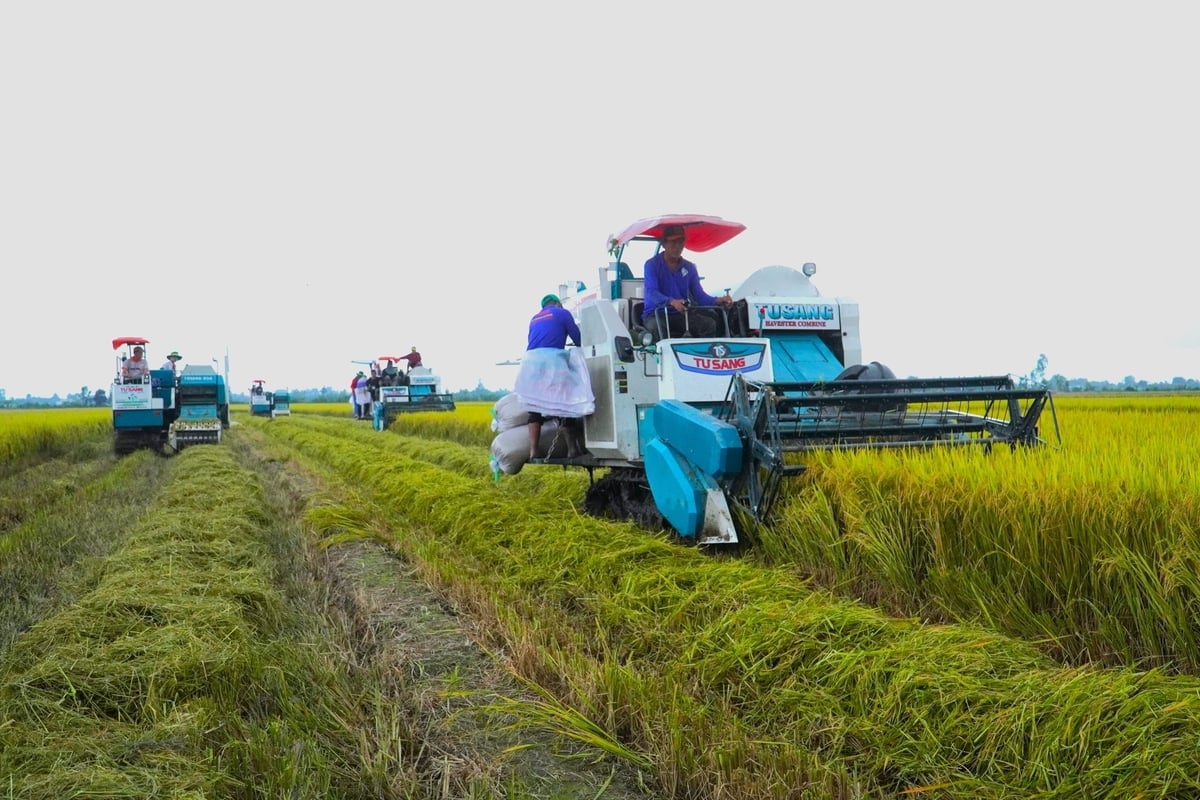
Preliminary calculations show that the amount of straw that needs to be collected and processed in the One Million Hectare High-Quality Rice Project is about 14 million tons. Photo: Kim Anh.
According to a preliminary evaluation, for the One Million Hectares of High-Quality and Low-Emission Rice Program, nearly 14 million tons of rice straws – a huge volume are generated as a result of 2 crops annually, creating a huge volume to handle effectively.
Deputy Minister Tran Thanh Nam posed a critical question at the "Strengthening the Straw Value Chain" forum in support of the One Million Hectares of High-Quality and Low-Emission Rice Program, which was jointly organized on the afternoon of April 8 by the Vietnam Rice Industry Association (VIETRISA), the International Rice Research Institute (IRRI), and the International Cooperation Department (Ministry of Agriculture and Environment). He stated, "In order to effectively manage and utilize this vast amount of rice straw, we must pursue multi-benefit and diversified products."
The Ministry of Agriculture and Environment has proactively collaborated with a variety of domestic and international partners to identify "demand sources" for rice straw, as per Deputy Minister Nam.
For instance, the Ministry has collaborated with Vietnam Electricity (EVN) to establish an agreement to incorporate a biomass power facility into Power Development Plan VIII. In Vinh Thanh District (Can Tho City), the proposed facility would utilize approximately one million tons of rice straw annually and have a capacity of 150MW.
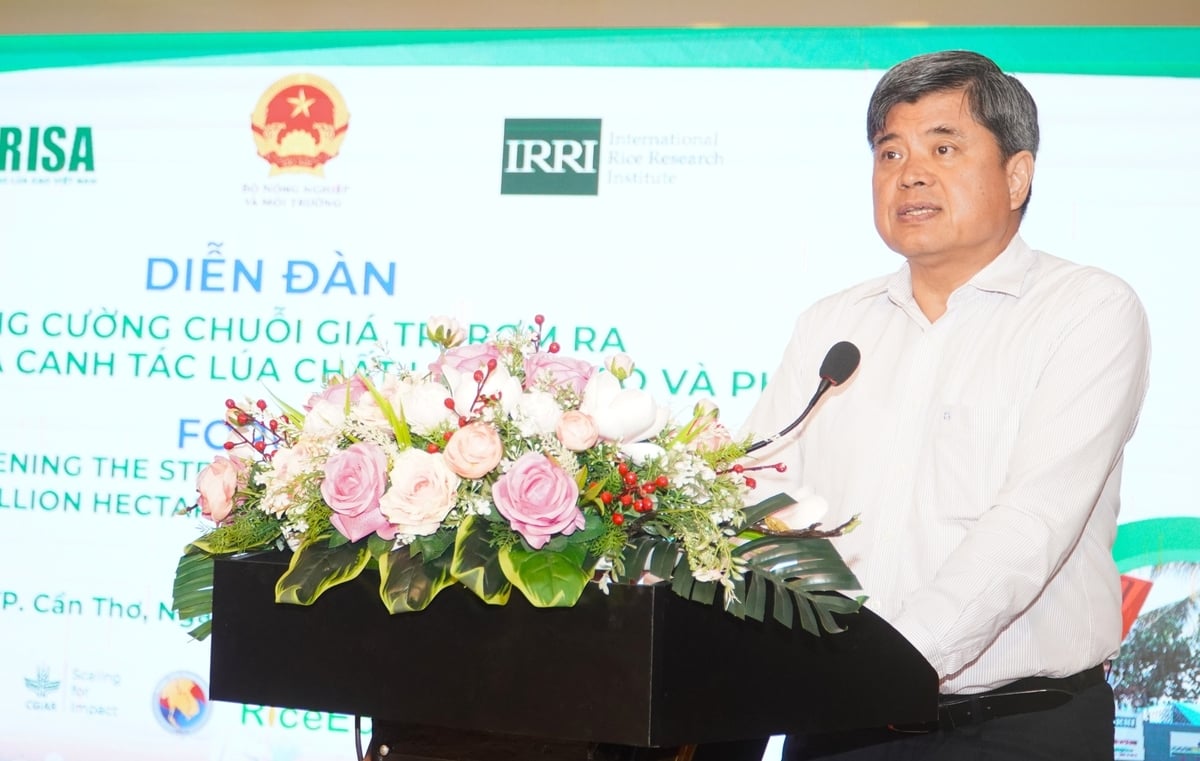
Deputy Minister of Agriculture and Environment Tran Thanh Nam proposed to develop an innovative program to solve the straw problem in the One Million Hectare High-Quality Rice Project. Photo: Kim Anh.
In Meanwhile, a Japanese partner is also investigating the feasibility of constructing a facility in the Mekong Delta to burn rice husks and straw in order to produce silica for use in cosmetics, automobile tires, wall fillers, and other applications.
Furthermore, numerous organizations have developed mechanized solutions and biological agents to enhance the efficiency of the collection and processing of rice straw.
However, the solutions mentioned above may only address a small portion of the present volume of rice straw and have not yet generated motivation. As a result, the Deputy Minister requested that VIETRISA work in conjunction with NAEC to develop a comprehensive innovation program that would generate additional value for rice straw.
According to a survey conducted by the IRRI with 10,000 farmers, rice straw was still burnt by over 54% of farmers, collected by nearly 39%, and incorporated into the soil by the remaining portion during the 2023–2024 winter-spring crop.
The collection rate had decreased to just over 25%, and the rate of straw burning had decreased to nearly 41% by the 2024 summer-autumn crop. Additionally, approximately 34% of the straw was plowed into the fields. The primary cause of this change was the rainy season, which rendered the fields too wet for straw baling machinery to operate effectively.
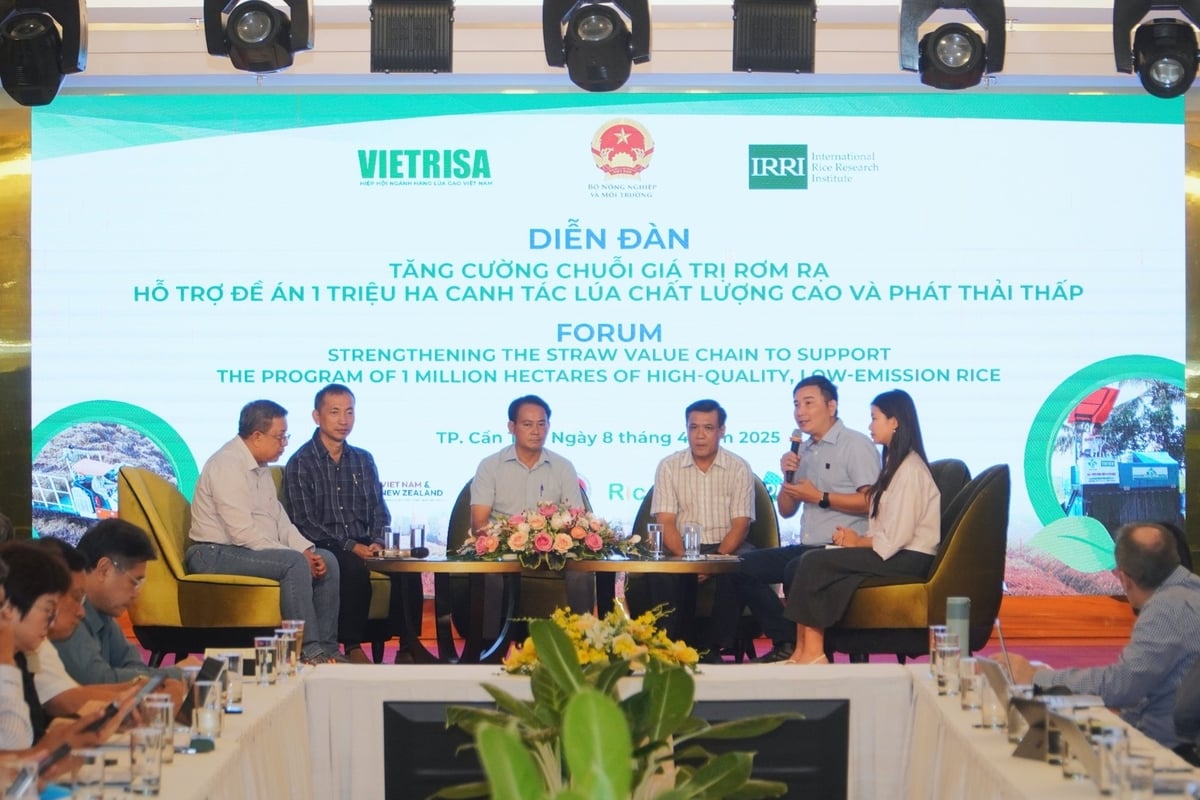
Enterprises and cooperatives share straw treatment initiatives at the Forum “Strengthening the straw value chain - Supporting the project of one million hectares of high-quality and low-emission rice”. Photo: Kim Anh.
In contrast to fresh incorporation and composting, the Institute of Agricultural Environment discovered that the collection of straw and its removal from the field results in reduced greenhouse gas emissions. This serves as a reminder that imprudent straw management not only undermines the environment but also fails to provide producers with economic advantages.
IRRI senior scientist Nguyen Van Hung conducted an analysis of the profit potential of straw per hectare of rice in order to "transform straw into gold." He believes that cultivators could generate a net income of approximately 86 million VND per hectare by cultivating rice three times annually, resulting in an annual yield of 24 tons.
The profit could increase by 14 million VND per hectare per year by utilizing organic fertilizer derived from paddy straw, which would result in reduced chemical fertilizer expenses and enhanced yields.
Furthermore, producers can generate an additional 3 million VND per hectare by employing straw baling services, which involve the collection of approximately 12 tons of baled straw annually from a single hectare of rice.
Utilizing straw for mushroom cultivation can result in a profit of approximately 6.5 million VND per year, as one hectare of straw can produce one ton of mushrooms annually. It is possible to convert the remaining mushroom substrate into organic fertilizer, which would generate an additional 9.5 million VND in annual revenue.
The annual added value of straw, which includes baling services, mushroom cultivation, organic fertilizer from mushroom refuse, and increased rice yields from the use of organic fertilizer, can reach 33 million VND per hectare. This is approximately 35–40% of the base income from rice cultivation, excluding the straw's value.
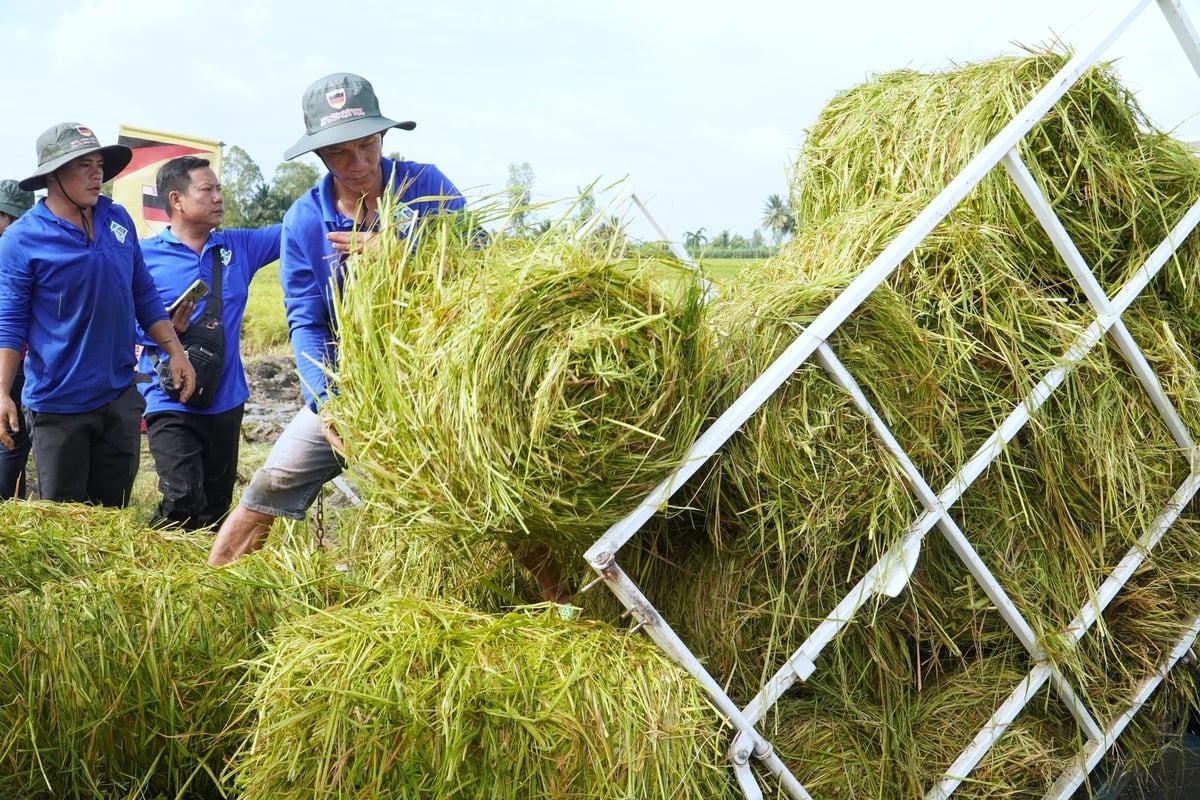
According to the roadmap of the 1 million hectares of high-quality rice project, by 2025, at least 70% of straw in specialized areas must be collected and reused. By 2030, the goal is for 100% of straw to be collected from the fields and no longer wasted. Photo: Kim Anh.
Farmers could generate an annual profit of up to 133 million VND per hectare by considering the entire value chain, which includes the cultivation of rice and the use of organic fertilizer.
Consequently, the absence of straw burning does not constitute a deficit. Conversely, it has the potential to enhance soil quality, decrease greenhouse gas emissions, and augment producers' earnings.
VIETRISA also disclosed its initiative to introduce the "Vietnam Low-Emission Rice" label by the conclusion of April 2025 at this forum. The high-quality, low-emission rice initiative will distribute the label to 6–8 enterprises, which will cover 30,000–50,000 tons of rice.
VIETRISA also launched a writing contest and introduced its official website at luagaovietnam.vn to celebrate the heritage and civilization of Vietnam's wet rice culture on this occasion.
$ 1 = VND 25.610 - Source: Vietcombank.
Translated by Linh Linh
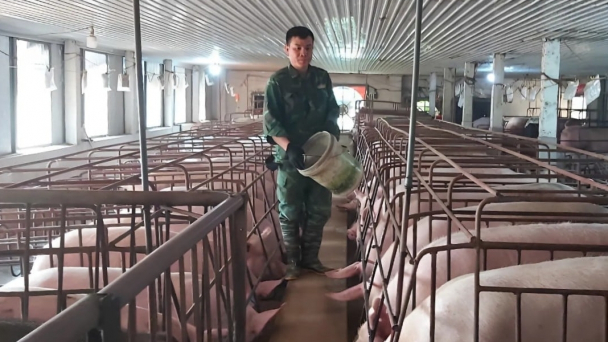
(VAN) Cold-barn systems efficiently manage environmental and temperature conditions, which aids in the prevention of respiratory diseases in pigs and protects them from the vectors that transmit African swine fevers.
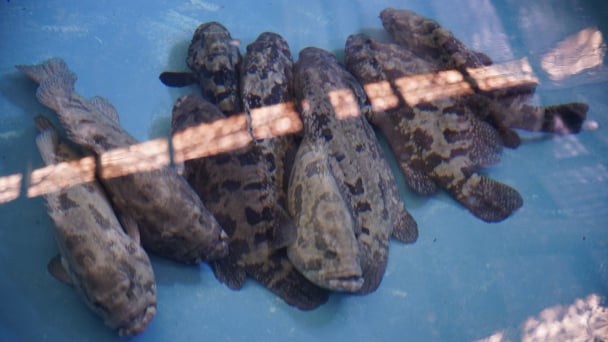
(VAN) To tackle challenges, the project 'Addressing key technical bottlenecks in the grouper supply chain in Vietnam' has been underway since 2024.
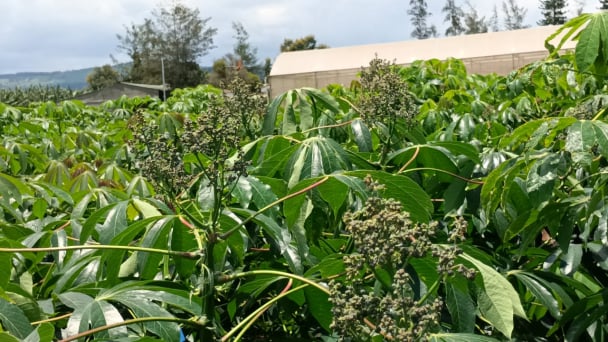
(VAN) The project 'Disease-Resilient and Sustainable Cassava Production Systems in the Mekong Region', funded by the Australian Center for International Agricultural Research (ACIAR), is being implemented from 2024 to 2028.

(VAN) Data from 10,000 farming households will help professionalize production organization and support the implementation of the One Million Hectares Program for High-Quality, Low-Emission Rice Cultivation.
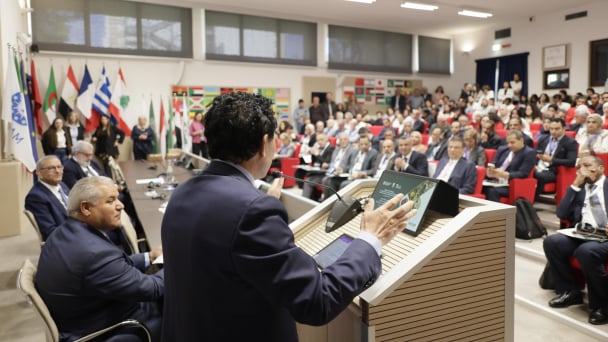
(VAN) FAO Director-General QU Dongyu marks International Day of Plant Health at NENA conference.
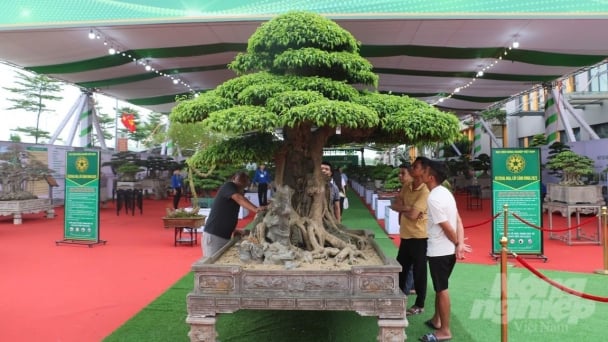
(VAN) Deputy Minister of Agriculture and Environment Hoang Trung affirmed that floriculture and ornamental plants are a growing industry that receives significant global attention.

(VAN) The three staple crops dominating modern diets – corn, rice and wheat – are familiar to Americans. However, fourth place is held by a dark horse: cassava.